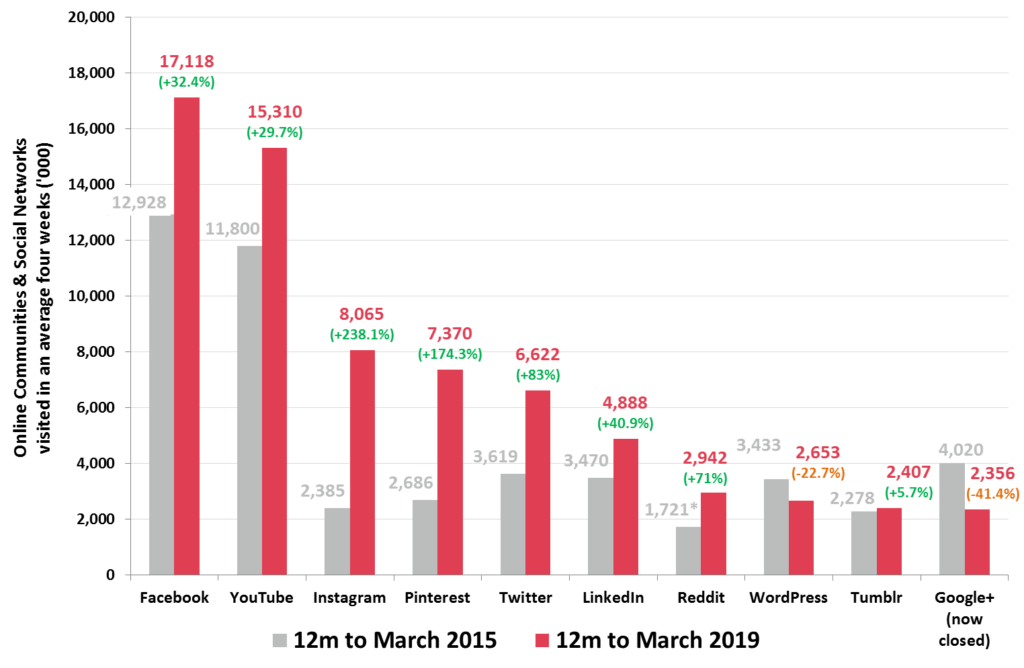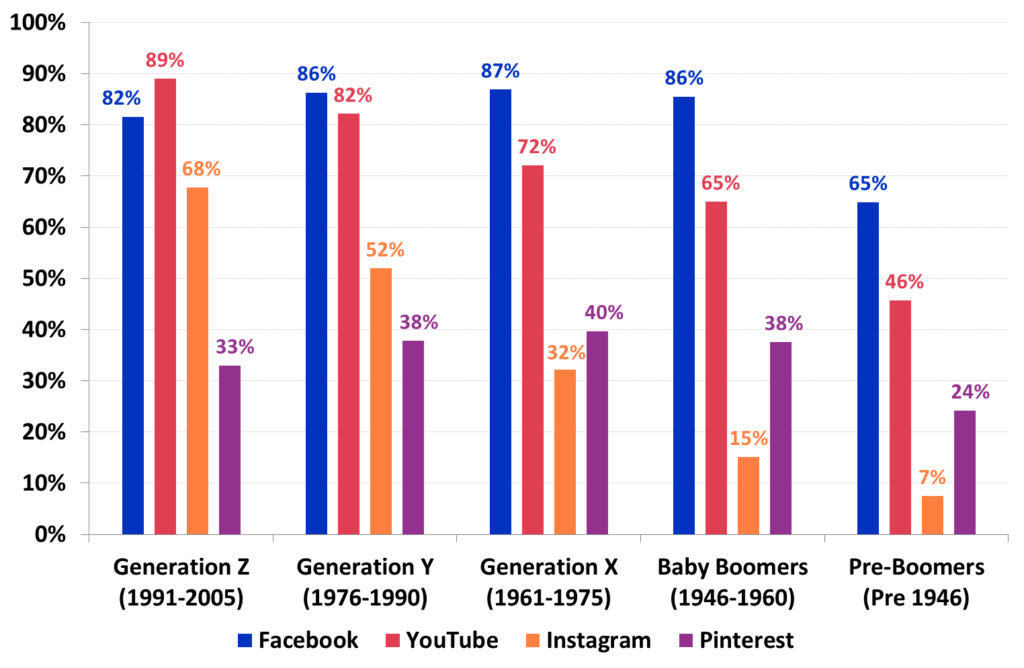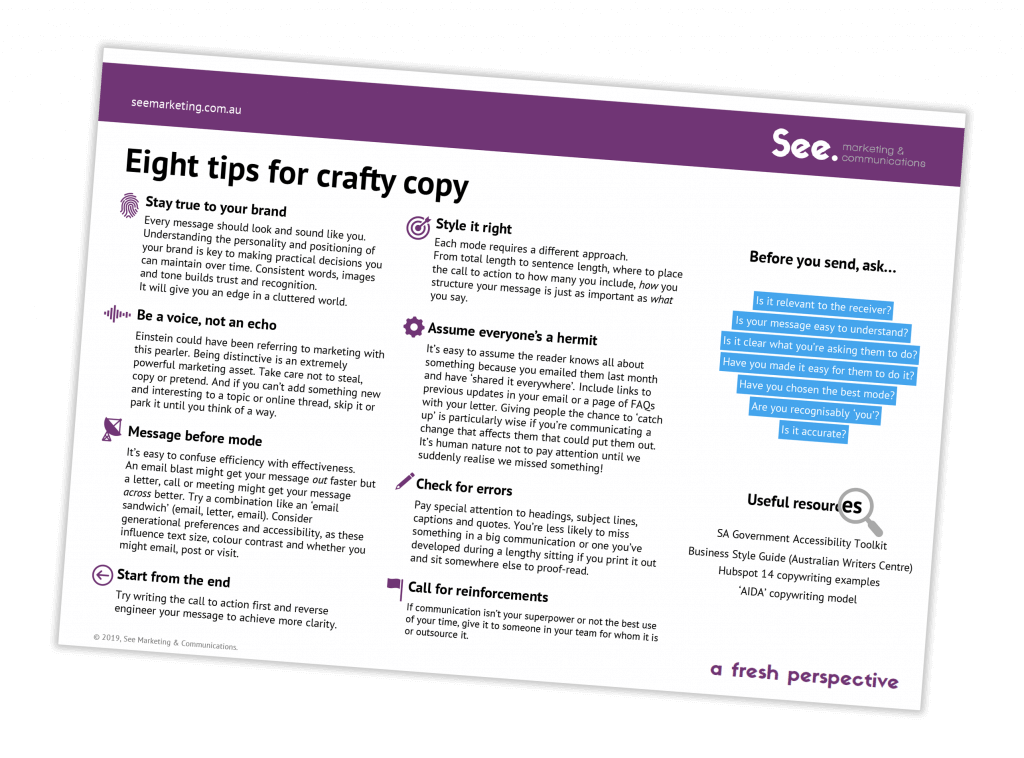The first thing I love most about marketing is its ever-changing nature. The second is that the fundamentals hold true regardless of whatever is being labelled ‘the next big thing’ in marketing.

Recently, I was asked to review the marketing plan of a retail chain in my home-town of Adelaide. It took just a few-hours but was a welcome opportunity to flex my strategic marketing muscles as well as those built over many years as an ISO Quality Assurance Internal Auditor.
Not every business has the capacity to commission someone like me to develop a marketing plan for them from start to finish. But for a few hundred dollars, you can steer your business a little straighter by asking a marketer to take an objective look at your existing plan to make sure your underlying assumptions stack up.
Why should you? It’s entirely practical to get a fresh perspective.
There’s no silver bullet in marketing
When developing your marketing strategy, details matter.
Google Ads are highly effective for many businesses but under perform without a well-functioning website. Radio ads can be great at raising awareness, but if your brand name is hard to remember or it isn’t spelt the way it sounds, it’s going to be trickier. Email marketing can be lucrative, but only if you’ve got a good list and if what you have to say is valuable to your subscribers.
There’s no silver bullet in marketing. It’s about how everything hangs together.
Fortunately, the most critical factors for success are things you can control. These include the quality of your product, the service experience you give and increasing your chances of being thought of by as many people as possible for the right reasons when they’re in the market for your category (the bigger your budget, the more people this will mean).
Effectively managing the things you can influence will give you a great product to market and hopefully, you’ve already established there’s enough demand for it.
Harder to control are the forces of nature and broader market factors such as changing consumer needs, legislation and your competition. For example, in Australian news right now we are reading about the impact of drought on the soybean supply chain. I can take or leave tofu at the best of times so if most buyers are like me, this will be a very challenging time for many.
Effectively managing the impact of things you can’t control requires resourcefulness, creativity and often, a degree of luck.
When it comes to promotion, your challenge is to develop a tactical plan in the context of your operating environment. One that ensures you invest the right level of effort in the right areas for your business. In short, gathering the facts to do more of what matters.
An essential test to decide how much effort to invest
When considering any promotional opportunity, be clear on how much of a relevant audience you can reach through it.
There was some great work in the marketing plan I reviewed. But I was struck by a few assumptions that didn’t look right. One in particular was that it prioritised Instagram over other channels because Instagram is growing. On paper, Instagram is growing. But the platform was at odds with the demographic profile of the customer base, the product attributes and brand positioning of the retail chain.
In the charts below, you can see Roy Morgan research on social media use by platform and demographic profile of platforms in Australia in March, published in 17 May 2019.
Chart 1. This compares a four-week period by top social media channels over four years. It’s easy to focus on the overall percentage growth where newer platforms like Instagram shine. But mature platforms like Facebook will have smaller growth because a significant portion of people have been using it for a long time. The growth potential is smaller.
What’s important here is that in March 2019, Facebook was used more than twice as often than Instagram.

Chart 2. Few products are genuinely going to appeal to everyone. So in media terms, including social media, it’s important to know as much about the potential audience as possible. Age is often a relevant detail as our interest in products and services changes across our lifetime. So the demographic profile of social media users in Australia becomes a key consideration when deciding where to focus your energy.
What’s important below is that in every age profile, Facebook still dominates (although YouTube is slightly ahead on Gen Z).

The business in question was focused on the growth of Instagram. While this might be relevant for some businesses in some categories, it isn’t relevant for every business and it didn’t make sense to over-emphasise it in this case. Put simply, Facebook had double the users and a more relevant audience than Instagram. That’s significant.
The take-home message
Instagram and any marketing tactic from Google Ads to emails may be great for others, but when deciding where to invest your hard-earned dollar, the only thing that matters is whether or not it’s right for you.
In the case of the retail chain, Instagram could play a valuable part in the overall channel mix. But its elevation in the marketing plan given the nature of the business and data on social media channel use and users, could have seen the company investing too much effort in one channel at the expense of another.
In marketing, WHO your customer is should determine every tactical decision, including WHERE you need to hang out to reach them. As your product evolves, as your market evolves, and as channels wax and wane, investing your resources wisely is a conscious effort of assessing new opportunities for potential and relevance. Your channel mix needs to be specific to you and likely will look very different two years from now.
Reviewing your marketing strategy and tactical plan regularly makes good business sense. If you’d like to find out more about what’s involved in us reviewing your marketing plan and giving you practice advice to strengthen your approach, contact us.



